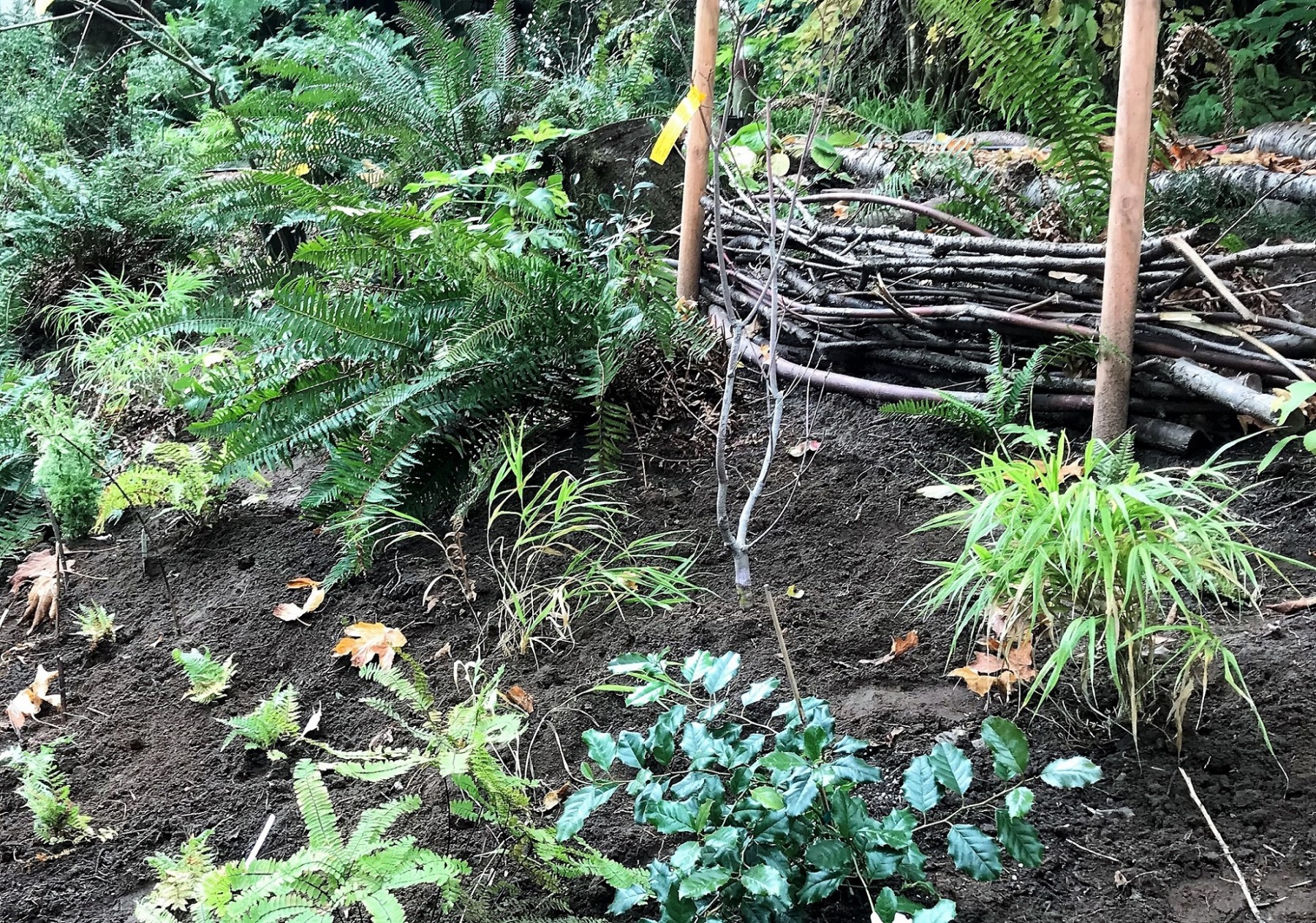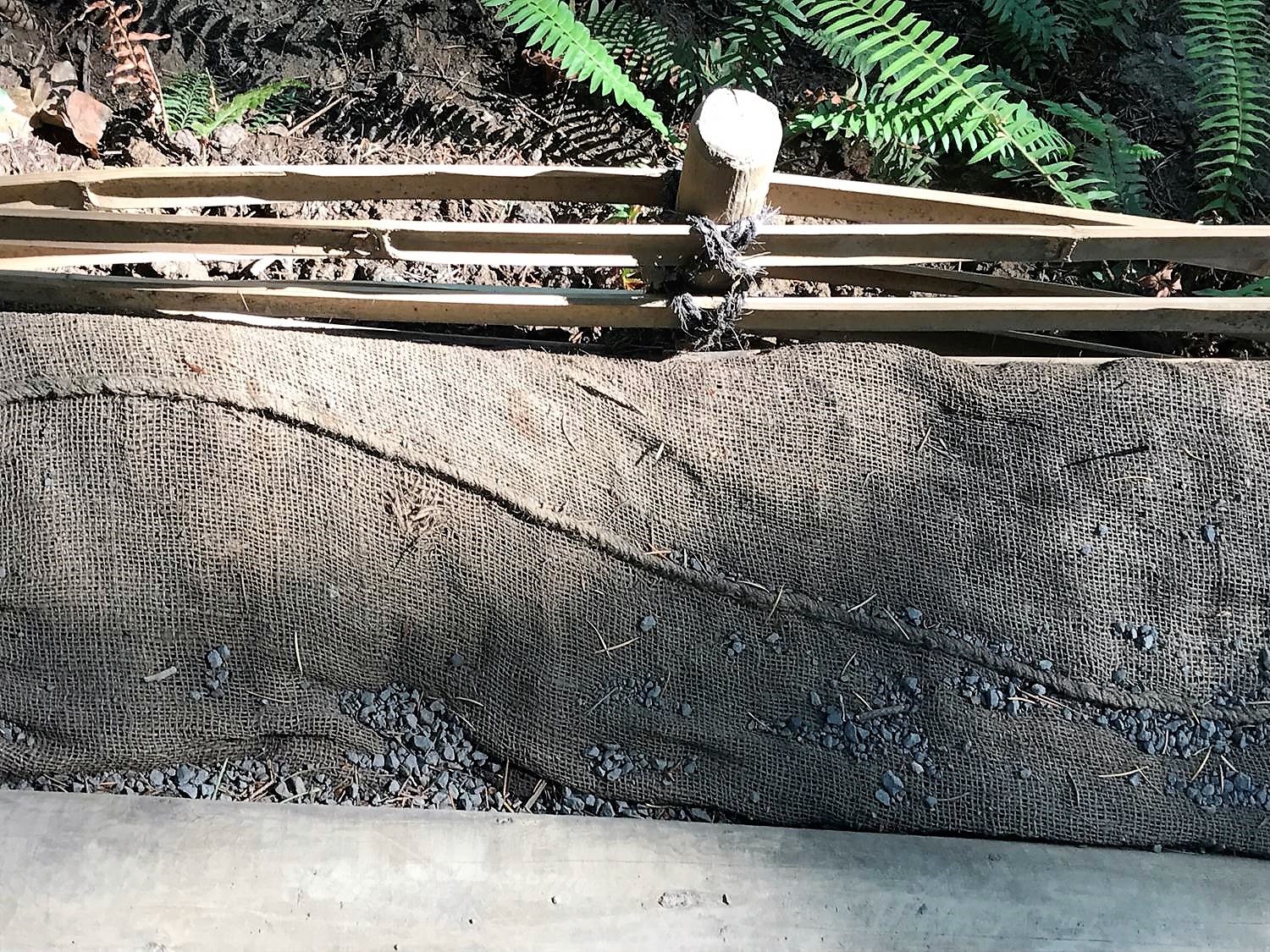
I love when I come across a new (to me) gardening term. I’d never heard the word fascine, until I talked with Vanessa Gardner Nagel, award-winning landscape designer and author. She mentioned she was building fascine to stabilize the slope in her Pacific Northwest ravine garden. A fascine, she explained, is a bundle of sticks laid across a hillside in order to prevent soil erosion until plants can get established.
If you’re confronted with slopes in your own garden, fascine might be an easy—and cheap—answer to help plants take hold. And if the land around your garden and greenhouse is absolutely flat, fascine could help you create naturalistic mounds or berms for elevating special plant collections.
Vanessa wanted to restore the steep ravine next to her home. She had to remove the smothering English ivy—a rampant weed in the Pacific Northwest. But she needed light-weight materials to hold the hill after the ivy was gone. And they had to be inexpensive. That ruled out permanent block or even metal retaining walls, which would have required serious manpower and extensive engineering.

Around the world, fascine have been used to strengthen ancient fortresses, support dams, and add bulk to ditches. On a visit to Italy, Vanessa first noticed the cylindrical bundles of sticks anchoring slopes of Rome’s Palatine Hill and then again, in the gardens of Villa d’Este. Nearer to home, at the Portland Japanese Garden, she also saw traditional burlap-wrapped bundles holding newly planted vegetation. At some point, she says, “A light bulb went off.”
So, Vanessa borrowed from diverse cultures and made her own four-to-six-foot bundles. The sticks came from trees damaged in last year’s wind and snow storms. “I don’t tend to bundle mine formally,” she tells me. “I just stack the branches with the least amount of space between them behind the vertical posts.” These posts came from a contractor who was discarding broken tree supports. “I’m dedicated to how I can reuse,” she says.

A small patch at a time, she tears out ivy and installs fascine. “The idea is, as I’m clearing, I’m planting right away.” The plants include fibrous-rooted ferns, grasses, and native groundcovers like rhizomatous salal. Other native choices are thicketing shrubs like snowberry, thimbleberry, and red flowering current.
Fascine aren’t meant to be permanent. Eventually, the materials will rot. Another bundle could be placed on top of the old. Or the plants will have grown into the soil the fascine has gathered, creating a natural hump that contains rainwater and slows its progress down the hill. “Ultimately, this ravine will be stabilized by the plantings and the pathways I’m creating,” Vanessa says. “My grandchildren will walk down to the creek and have a great time.”


